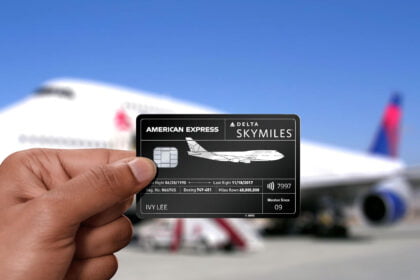That gleaming hotel room might look pristine, but appearances can be deceiving. After working in hospitality for over a decade and conducting extensive research on hotel hygiene practices, I’ve discovered some unsettling truths about what really gets cleaned—and what doesn’t—during the standard room turnover process.
The reality is that housekeeping staff often have just 20-30 minutes to flip a room between guests, and they’re working with quotas that prioritize speed over thorough sanitization. While hotels have ramped up cleaning protocols since 2020, many of the germiest spots in your room still don’t receive the attention they deserve. Some surfaces that look spotless are actually teeming with bacteria, viruses, and other pathogens left behind by previous guests.
Before you swear off hotels forever, understand that this isn’t about creating panic—it’s about awareness. Once you know which areas harbor the most germs, you can take simple precautions to protect yourself without sacrificing the comfort and convenience of hotel stays. These aren’t expensive or complicated measures; they’re quick actions that can dramatically reduce your exposure to illness-causing pathogens.
The Science Behind Hotel Room Contamination
Hotel rooms present unique hygiene challenges due to rapid turnover, high-touch surfaces, and the simple fact that sick people sometimes stay in them. A study by the University of Houston found that hotel surfaces can harbor bacteria and viruses for days or even weeks, depending on the pathogen and environmental conditions.
Survival rates vary by microorganism: Norovirus can survive on surfaces for weeks, influenza viruses persist for 24-48 hours, and bacteria like E. coli and Staphylococcus can live for days on hard surfaces. Meanwhile, fungi and mold spores can survive indefinitely in humid environments like hotel bathrooms.
Cross-contamination occurs when housekeeping staff use the same cleaning cloths across multiple surfaces or rooms without proper sanitization. A cloth used to wipe the toilet might later be used on the desk surface, spreading pathogens throughout the room.
Chemical resistance means that some pathogens require specific disinfectants or contact times that aren’t always used in rapid hotel cleaning protocols. Simply wiping a surface with any cleaning product doesn’t guarantee pathogen elimination.
READ ALSO: Worried About Bedbugs in Your Hotel? Try This Hack the Moment You Get to Your Room
#1: The TV Remote Control – The Ultimate Germ Magnet

The television remote control consistently ranks as the germiest item in hotel rooms across multiple studies. This small device passes through hundreds of hands monthly but rarely receives thorough cleaning between guests.
Why it’s so contaminated: Remote controls have multiple crevices, buttons, and battery compartments where germs accumulate. The rubber and plastic materials provide ideal surfaces for pathogen survival. Most concerning, remotes are handled frequently during illness—guests channel-surf when they’re stuck in bed with colds, flu, or stomach bugs.
The bacterial evidence: Laboratory tests have found everything from fecal bacteria to antibiotic-resistant pathogens on hotel remote controls. The complex surface makes thorough cleaning difficult, and many housekeeping protocols don’t include disinfecting remotes at all.
Protection strategy: Immediately upon entering your room, wrap the remote in a tissue or plastic bag before use, or clean it thoroughly with disinfectant wipes. Focus on buttons and crevices where germs hide. Some travelers bring their own universal remotes to avoid touching hotel remotes entirely.
Advanced protection: If you’re immunocompromised or particularly concerned, consider downloading hotel TV control apps to your smartphone, which many hotel chains now offer, eliminating the need to touch the physical remote.
#2: Light Switches and Lamp Controls – Hidden Contamination Points
Light switches and bedside lamp controls are among the first things you touch when entering a room and among the last things housekeeping cleans—if they clean them at all.
Why they harbor germs: These surfaces are touched by every single guest, often multiple times per stay. Light switches are frequently touched with unwashed hands after using bathrooms or handling luggage. The switch plates and lamp bases provide textured surfaces where pathogens can hide.
The cleaning reality: Most housekeeping staff focus on visible cleanliness rather than disinfection of switches and controls. These surfaces might go days or weeks between thorough cleaning, allowing pathogen accumulation.
Protection strategy: Use a knuckle or elbow to operate light switches when possible, or clean them with disinfectant wipes immediately upon arrival. For lamp controls, wipe down switch bases, pull chains, and touch points before use.
Smart alternatives: Many modern hotels feature motion-activated or app-controlled lighting. When available, these contactless options significantly reduce the risk of contamination.
READ ALSO: Best Travel Gear for Parents
#3: Door Handles and Locks – The Entry Point for Pathogens

Door handles, deadbolts, and security chains are touched by every guest but often overlooked during cleaning routines. These surfaces create a direct pathway for pathogen transmission between guests.
Contamination factors: Exterior door handles are exposed to pathogens from countless hands, while interior bathroom door handles can harbor fecal bacteria and other bathroom-related contaminants. The metal surfaces can support bacterial survival for extended periods.
Cleaning gaps: Housekeeping typically focuses on interior room cleaning rather than detailed attention to door hardware. Complex lock mechanisms and security devices have crevices that are difficult to clean thoroughly.
Protection strategy: Clean all door hardware with disinfectant wipes upon arrival, paying special attention to handles, deadbolts, security chains, and the door frame areas around locks. Make this part of your room entry routine.
Behavioral changes: Use tissues or sleeves to grab handles when your hands aren’t freshly washed, and always wash hands immediately after handling any door hardware.
#4: The Desk and Chair – Deceptively Dirty Workspaces
Hotel desks and chairs look clean and professional, but they’re actually high-contact surfaces that rarely receive deep cleaning between guests. Business travelers spend hours at these surfaces, often while eating, drinking, and handling personal items.
Why they’re problematic: Desks accumulate germs from laptops, phones, food, drinks, and personal items. Chair armrests and backs contact clothing and skin for extended periods. The wood, laminate, or metal surfaces can harbor pathogens for days.
Hidden contamination: Desk drawers, cable management areas, and chair crevices collect debris and pathogens that aren’t addressed during standard room cleaning. Previous guests might have eaten meals at the desk or placed items from bathrooms on these surfaces.
Protection strategy: Thoroughly wipe down the entire desk surface, chair arms, back, and seat with disinfectant wipes before use. Pay attention to drawer handles, desk edges, and any built-in amenities like charging ports.
Create barriers: Use your own laptop sleeve or towel as a barrier between your equipment and the desk surface. Avoid placing personal items directly on chairs or desks without cleaning first.
#5: Bathroom Surfaces Beyond the Obvious
While most travelers expect bathroom toilets and tubs to be dirty, other bathroom surfaces harbor surprising levels of contamination that standard cleaning might miss.
Sink faucets and handles: These surfaces are touched with contaminated hands before and after bathroom use, creating ideal conditions for pathogen transfer. The aerator screens inside faucets can harbor bacteria and biofilm that survive standard cleaning.
Bathroom door handles and locks: Interior bathroom doors concentrate fecal bacteria and other bathroom pathogens. The privacy locks are touched frequently but rarely cleaned thoroughly.
Towel bars and hooks: These surfaces contact potentially contaminated towels and are touched with wet hands. Metal surfaces can harbor bacteria for extended periods.
Floor areas around toilets: Even in clean-looking bathrooms, floor areas near toilets can harbor bacteria from splash-back and aerosol contamination from flushing.
Protection strategy: Clean all bathroom hardware with disinfectant wipes, including faucet handles, door hardware, towel bars, and toilet paper holders. Use tissues to operate handles when possible.
Ventilation concerns: Run bathroom fans during and after use to reduce humidity that promotes bacterial and fungal growth. Keep bathroom doors closed to prevent contamination spread to sleeping areas.
#6: Phone Handsets – Direct Pathogen Transfer Devices
Hotel room phones are perhaps the most direct route for pathogen transmission, as they come into contact with guests’ mouths, hands, and breathing passages.
Why phones are dangerous: Handsets are held close to faces, exposing users to respiratory pathogens left by previous guests. The plastic surfaces and cord crevices provide ideal conditions for germ survival. Phone cleaning is often completely omitted from housekeeping routines.
Contamination evidence: Studies have found significant bacterial contamination on hotel phone handsets, including pathogens that cause respiratory and gastrointestinal illness. The mouthpiece and earpiece are particularly problematic areas.
Protection strategy: Avoid using hotel phones entirely when possible, relying instead on your mobile device. If you must use the hotel phone, clean the handset thoroughly with disinfectant wipes, focusing on the mouthpiece, earpiece, and buttons.
Alternative communication: Use your smartphone, laptop calling applications, or request a sanitized phone from the front desk if extended phone use is necessary.
#7: Coffee Makers and Water Glasses – Hidden Health Hazards
Hotel coffee makers and drinking glasses present unique contamination risks that aren’t immediately obvious but can cause serious illness.
Coffee maker contamination: The internal water reservoirs and brewing chambers of hotel coffee makers rarely receive thorough cleaning. Previous guests might have used them for purposes other than coffee brewing, and the warm, moist environment promotes bacterial growth.
Water reservoir risks: Stagnant water in coffee maker reservoirs can harbor bacteria, including potentially dangerous pathogens like Legionella. The complex internal mechanisms are difficult to clean properly.
Glass contamination: Hotel glasses might be “cleaned” with the same towels used elsewhere in the room, or simply rinsed without proper sanitization. Lipstick, bacteria, and other contaminants can survive inadequate cleaning.
Protection strategy: Avoid using hotel coffee makers entirely, opting instead for single-serve options or bringing your own travel coffee solution. If you must use the coffee maker, run multiple cycles of hot water through it before brewing.
Safe drinking: Use bottled water or bring your own water bottle with filtration capabilities. If you use hotel glasses, wash them thoroughly with hot, soapy water and dry with clean towels before use.
Advanced Protection Strategies for Health-Conscious Travelers
The Arrival Sanitization Protocol
Develop a systematic approach to room sanitization upon arrival:
Immediate actions: Before touching anything except what’s necessary, get your disinfectant wipes and systematically clean high-touch surfaces. Start with door handles and light switches, then move to electronics, furniture, and bathroom fixtures.
The 15-minute rule: Spend 15 minutes sanitizing your room’s high-risk areas. This small time investment can prevent days of illness and trip disruption.
Supply management: Travel with a dedicated supply of high-quality disinfectant wipes that are effective against viruses, bacteria, and fungi. Check EPA registration numbers to ensure effectiveness.
Technology Solutions
Modern technology offers several ways to reduce hotel room contamination risks:
UV sanitizing devices: Portable UV-C sanitizers can effectively kill pathogens on surfaces like phones, remotes, and personal items. These devices are becoming more accessible and affordable for travelers.
Antibacterial phone cases: Specialized phone cases with antimicrobial properties can reduce pathogen transfer from contaminated surfaces to your personal device.
Personal air purifiers: Small, travel-sized air purifiers can help reduce airborne pathogens in hotel rooms, particularly important for respiratory health.
Building Immunity Through Smart Practices
Hand hygiene mastery: Proper handwashing technique and frequency remain your most effective protection against hotel room pathogens. Wash hands immediately upon entering your room, before eating, and after touching any high-risk surfaces.
Immune system support: Maintain strong immune function through proper sleep, hydration, and nutrition during travel. A robust immune system can handle exposure to pathogens that might sicken travelers with compromised immunity.
Barrier methods: Use tissues, sleeves, or gloves to interact with contaminated surfaces when cleaning isn’t practical. Create physical barriers between your skin and potentially contaminated surfaces.
When to Take Extra Precautions
Certain situations warrant heightened vigilance about hotel room hygiene:
Flu season travel: During peak cold and flu seasons, hotel rooms pose higher risks due to increased numbers of sick travelers. Enhanced cleaning protocols become essential.
Immunocompromised travelers: People with weakened immune systems, chronic illnesses, or those taking immunosuppressive medications should consider additional protection measures or even alternative accommodations.
Business travel during illness outbreaks: During norovirus outbreaks, COVID-19 surges, or other contagious illness events, business travelers may need to implement comprehensive room sanitization protocols.
Extended hotel stays: Longer stays increase exposure time and risk. Consider requesting fresh linens and towels more frequently, and maintain consistent cleaning routines throughout your stay.
The Economics of Hotel Room Hygiene
Understanding the business realities behind hotel cleaning helps explain contamination risks:
Time constraints: Housekeeping staff typically have 20-30 minutes to clean entire rooms, making thorough disinfection challenging. Focus on speed often compromises thoroughness.
Cost pressures: Hotels balance cleaning costs with profit margins, sometimes resulting in reduced cleaning supplies, abbreviated protocols, or undertrained staff.
Staff turnover: High turnover in housekeeping positions can lead to inconsistent cleaning standards and inadequate training on proper sanitization techniques.
Inspection gaps: Quality control inspections focus primarily on visible cleanliness rather than pathogen elimination, allowing contaminated but clean-looking surfaces to pass inspection.
Hotel Chain Differences in Cleaning Standards
Not all hotels approach room hygiene equally:
Luxury hotels typically have more thorough cleaning protocols, better-trained staff, and higher quality cleaning products. However, even luxury properties can have contamination issues in high-touch areas.
Budget hotels face greater cost pressures that can result in abbreviated cleaning protocols or reduced sanitization measures. However, some budget chains have implemented excellent hygiene standards.
Extended-stay properties may have different cleaning schedules and protocols compared to traditional hotels, potentially affecting contamination levels in different areas.
Independent hotels vary widely in their cleaning standards, depending entirely on individual management priorities and local regulations.
International Considerations
Hotel hygiene standards vary significantly by country and region:
Developed countries typically have stricter regulations and enforcement of hotel cleaning standards, though implementation still varies by property.
Developing regions may have different hygiene standards, cleaning products, or staff training that affects room contamination levels.
Cultural differences in cleanliness concepts and practices can influence how thoroughly different surfaces are cleaned in various regions.
Regulatory environments with strong health department oversight tend to produce better hotel hygiene outcomes than areas with minimal regulation.
Building Long-Term Travel Health
Protecting yourself from hotel room contamination is part of a broader travel health strategy:
Consistent practices: Develop cleaning routines that become second nature, reducing the mental load of remembering hygiene protocols while tired or stressed.
Supply management: Maintain a travel hygiene kit with disinfectant wipes, hand sanitizer, and basic cleaning supplies that you refresh regularly.
Health monitoring: Pay attention to your health patterns during and after travel to identify any correlations with accommodation hygiene practices.
Continuous learning: Stay informed about new hygiene technologies, travel health research, and emerging pathogen threats that might affect your travel safety strategies.
The goal isn’t to become paranoid about every surface or avoid hotels entirely—it’s to travel with awareness and take reasonable precautions that protect your health without compromising your enjoyment. A few minutes of cleaning upon arrival can prevent days of illness and ensure your travels remain memorable for all the right reasons.
Remember, hotels can be perfectly safe and enjoyable when you know how to protect yourself. These contamination risks are manageable with proper awareness and simple preventive measures. Focus on the high-risk areas, maintain good hygiene practices, and you can confidently explore the world while staying healthy and comfortable in hotel accommodations.
In another related article, Airbnb vs Hotels: Which Is Actually Safer for Solo Travelers?







